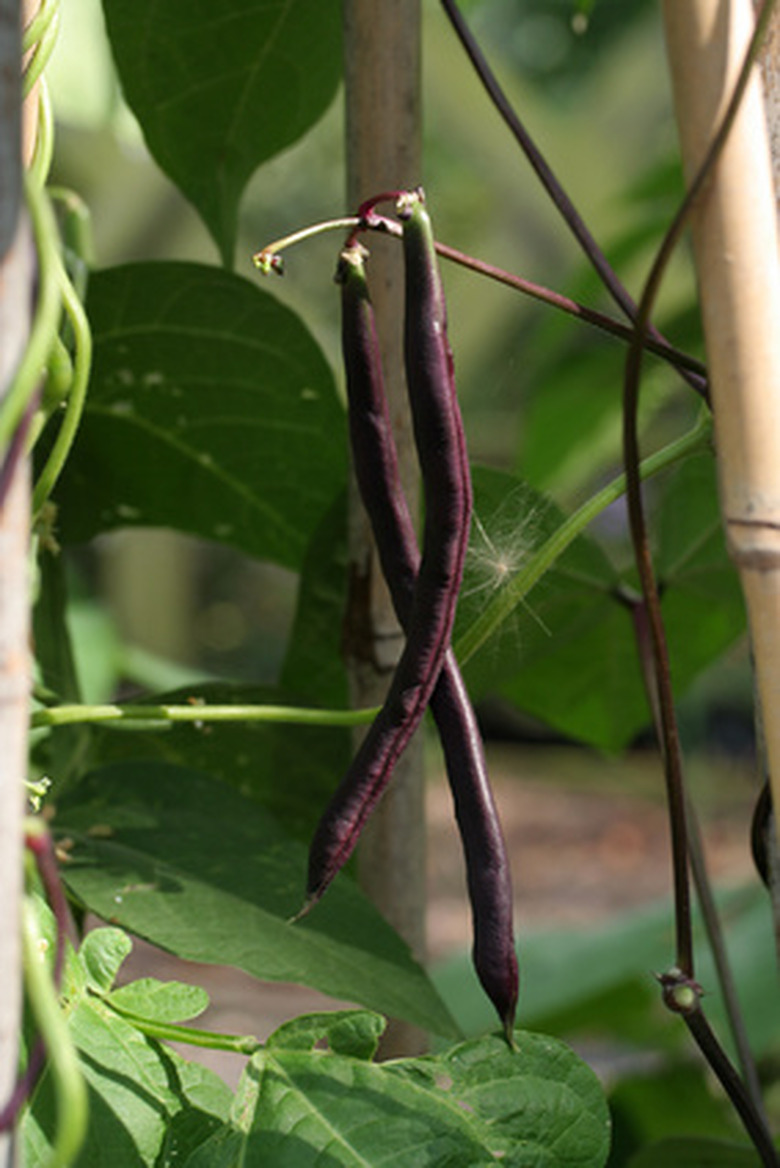Scientific Names Of Garden Vegetables
Growing your own vegetables is an excellent way to expand your gardening skills and add fresh, healthy food to your family's table at the same time. Many vegetables are also easy to grow. Beans, for example, are low-maintenance plants, have many uses and are second in popularity to tomatoes, according to the University of Illinois. Vegetables, just like any other plant, have scientific names, although they are rarely used by the general public.
Phaseolus Vulgaris: Pole Bean
Phaseolus vulgaris is the scientific name for the common pole bean, a warm-season vegetable. This plant needs a support structure to grow well, as it can grow to 10 feet tall, according to Cornell University. These tasty beans are easy to grow and look lovely as a border plant behind bedding flowers. Some varieties are ornamental themselves, with deep purple or yellow seed pods. Pole beans grow best in full sun with consistently moist soil.
- Growing your own vegetables is an excellent way to expand your gardening skills and add fresh, healthy food to your family's table at the same time.
- These tasty beans are easy to grow and look lovely as a border plant behind bedding flowers.
Brassica Oleracea Var. Capitata: Cabbage
Cabbage is a cool-season vegetable and thrives in temperate climates where the daytime temperatures are only in the 60 to 70 degree F range. These vegetables grow best in full sun and in well-draining soil. Brassica oleracea var. capitata is somewhat difficult to cultivate, according to Cornell University, because it has high nutrient needs and requires soil that is constantly moist, but not too soggy. In addition, the inner leaves can be damaged by frost even though the plant may look unaffected.
Zea Mays: Sweet Corn
Zea mays, or sweet corn, is a favorite with many home gardeners. This vegetable thrives in full sun and rich, fertile soil that is kept consistently watered. Sweet corn can grow up to 6 feet tall and more than a foot wide, so be sure to give these plants plenty of room to stretch out. Zea mays is native to North America.
- Cabbage is a cool-season vegetable and thrives in temperate climates where the daytime temperatures are only in the 60 to 70 degree F range.
- capitata is somewhat difficult to cultivate, according to Cornell University, because it has high nutrient needs and requires soil that is constantly moist, but not too soggy.
Solanum Tuberosum: Potatoes
Potatoes are desirable for their versatility and high nutrient content. A wide range of varieties are available, and all of them need full sun and loamy, rich soil in order to grow well. The soil should also be slightly acidic and well-draining, as too much water in the ground can rot the potatoes. Solanum tuberosum plants are easy to grow if these conditions are met, according to Cornell University.
Lycopersicon Esculentum: Tomatoes
Tomatoes are the most popular vegetable grown in home gardens, according to Cornell University. They come in a large number of varieties which range widely in their sizes, growing habits, and cold-hardiness. Some staked tomatoes can grow up to 6 feet tall, while cherry tomatoes can be small enough to grow in pots. Tomatoes need full sun and very well-draining soil that is consistently moist but not soggy. The pH level of the soil should be between 6.0 and 6.8 for best fruiting.
- Potatoes are desirable for their versatility and high nutrient content.
- The soil should also be slightly acidic and well-draining, as too much water in the ground can rot the potatoes.
